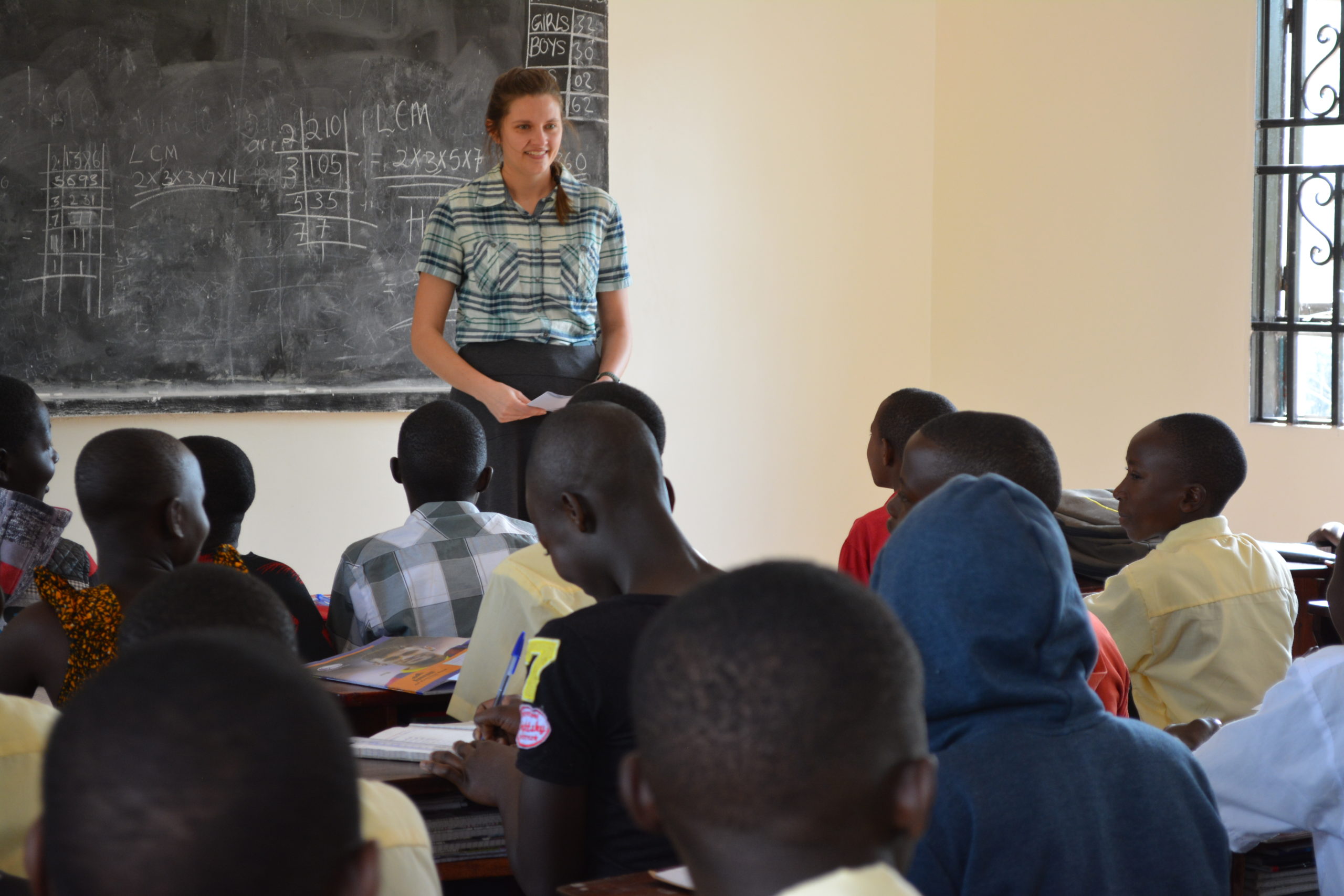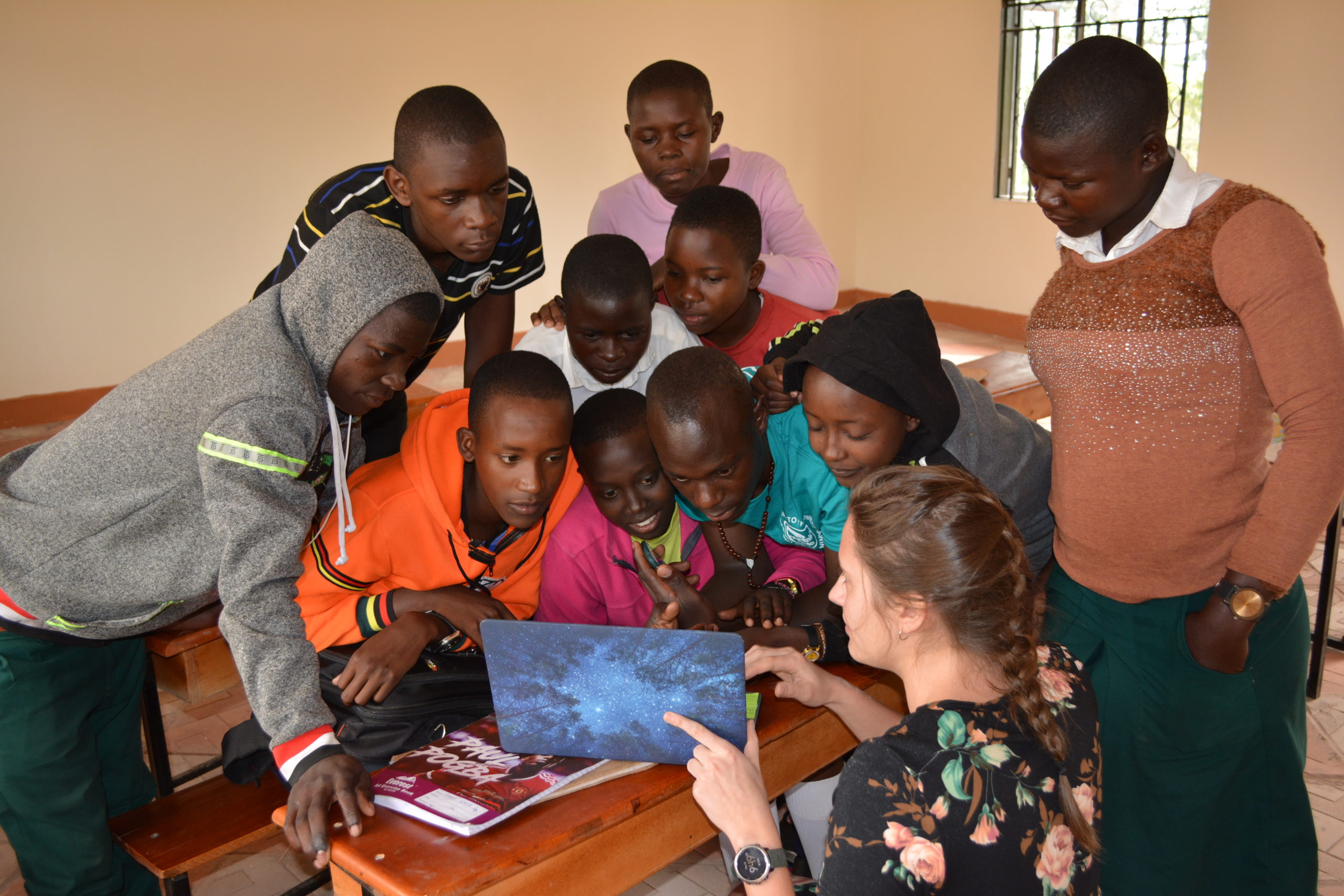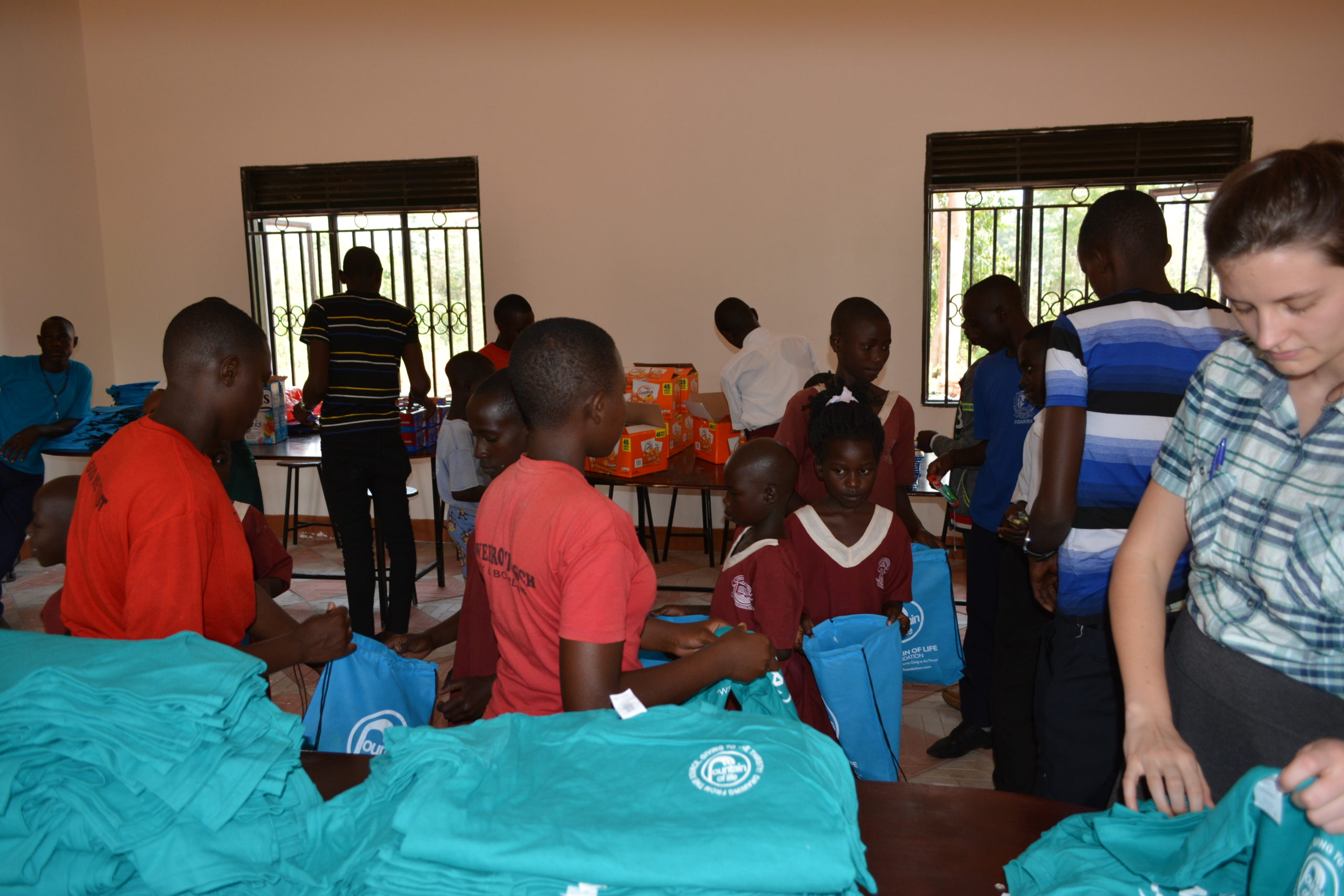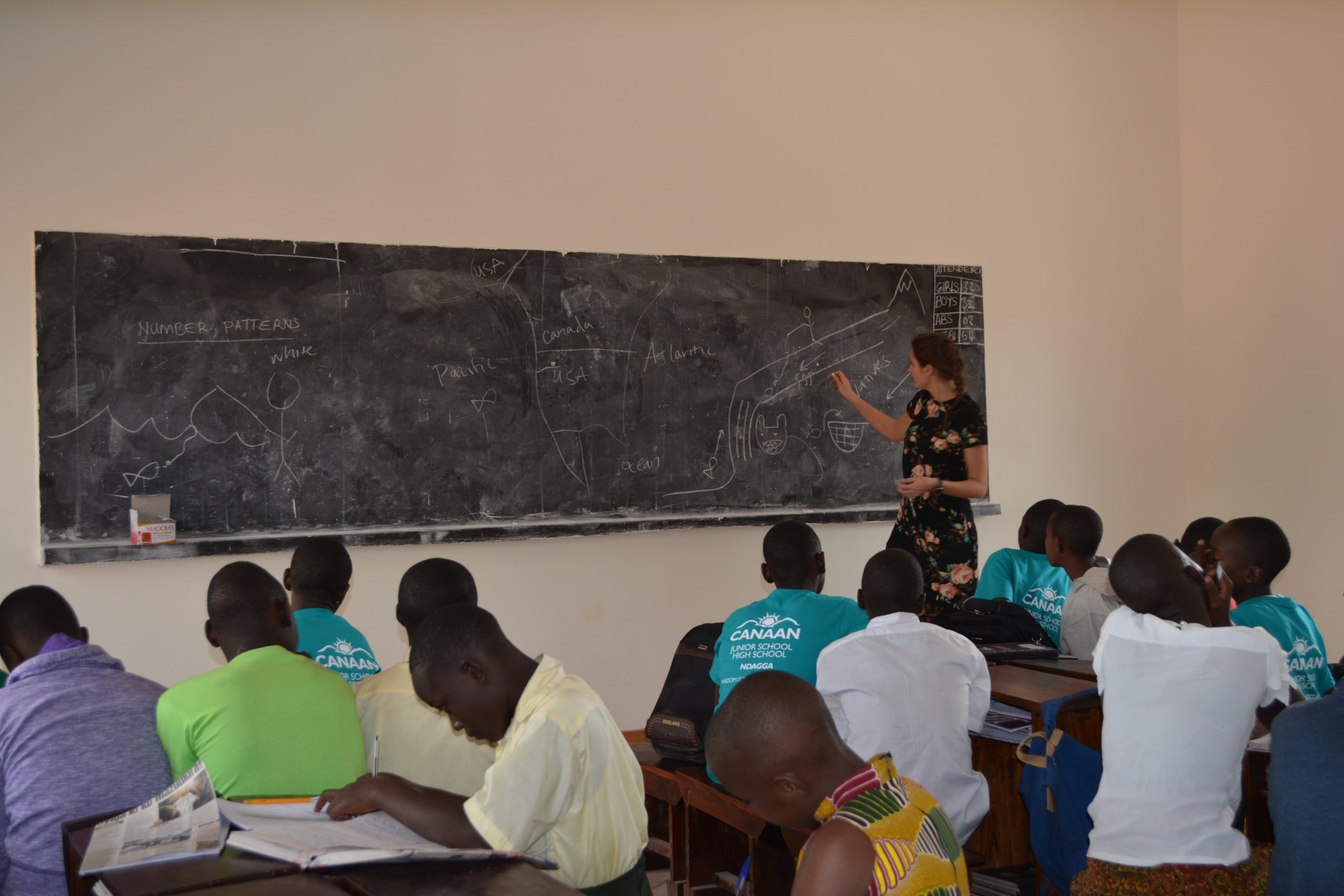
Teaching in an Ndagga Secondary School ClassroomAs I stood at the front of the secondary school classroom teaching about fishing in British Columbia, I wondered how this topic would go over with this group of students. This subject seemed so out of place in Uganda. Why would the headmistress assign this material for a guest teacher? Without curriculum and information about the student’s background on the topic, I scrambled to find some important points to present to the class. Despite feeling nervous and unprepared, there was still this excitement about teaching from the heart to this group of 62 eighth grade students. I was without technology and all of the teaching tools I have come to rely on in my classroom at home. With just chalk and a blackboard, I made simple drawings to illustrate my points. As the class started, I could see that the students had sufficient background on the topic of fishing to allow them to easily understand and engage in the lesson I taught. We talked about types of fishing, the salmon life cycle and fish migration. In teaching this lesson, I experienced how curiosity about a subject brings us together to learn from each other on topics that may otherwise seem mundane. I later discovered that fishing is the second highest export for Uganda (coffee is first). Overfishing and significant loss of fish populations have political and economic implications for this part of the world. Our students at Ndagga are engaging in these topics and conversations that will make them able to be informed citizens of their communities and of the world. When I think about the Ndagga school story and see how the students are engaging in their education, I am completely amazed at what can be done in 6 years. by Kathrin Miracle |




